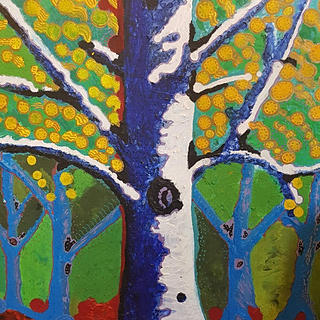Painting Through History: A Timeline of Art Movements
- Charm Manach Private Work
- Feb 7, 2024
- 2 min read
The essence of many times, cultures, and ideologies are captured in works of art, which mirror the human experience. Artists have always pushed the limits of their creativity, which has resulted in the birth of numerous art movements that have come to characterize particular eras. We'll take a historical tour of important art trends that have influenced the development of artistic expression in this blog article. See our earlier piece, Art and Culture: A Timeless Journey Through Different Eras and Styles, for a more in-depth look at the relationship between art and culture.

The Renaissance (14th - 17th Century):
The Renaissance marked a pivotal period in art history, characterized by a revival of classical ideals and a newfound emphasis on realism and humanism. Artists such as Leonardo da Vinci, Michelangelo, and Raphael produced masterpieces that celebrated the beauty of the natural world and the human form.
Baroque (17th - 18th Century):
Baroque art is characterized by its dramatic intensity, elaborate ornamentation, and emotional theatricality. Artists like Caravaggio and Rembrandt embraced chiaroscuro to create striking contrasts of light and shadow, while Bernini's sculptural works epitomized the dynamic energy of the Baroque era.
Impressionism (19th Century):
Impressionism emerged as a rebellion against the rigid conventions of academic painting. Artists such as Claude Monet, Edgar Degas, and Pierre-Auguste Renoir sought to capture fleeting moments of light and atmosphere, employing loose brushwork and vibrant color palettes to convey sensory impressions.
Expressionism (Early 20th Century):
Expressionism rejected the objective representation of reality in favor of subjective interpretations and emotional intensity. Artists like Edvard Munch and Wassily Kandinsky explored themes of alienation, anxiety, and spirituality, using bold colors and distorted forms to evoke psychological depth.
Surrealism (1920s - 1930s):
Surrealism emerged as a response to the disillusionment of post-World War I society. Artists like Salvador Dalí, René Magritte, and Frida Kahlo explored the realm of dreams, the subconscious, and the irrational, creating enigmatic and fantastical worlds that defied logic and reason.

Abstract Expressionism (Mid-20th Century):
Abstract Expressionism is characterized by its emphasis on spontaneous, gestural brushwork and the exploration of the artist's inner psyche. Figures such as Jackson Pollock, Willem de Kooning, and Mark Rothko pushed the boundaries of abstraction, paving the way for non-representational art.
Contemporary Art (Late 20th Century - Present):
Contemporary art encompasses a diverse range of styles, mediums, and conceptual approaches. From Pop Art to Conceptual Art, artists continue to challenge conventions, blur boundaries, and redefine the possibilities of artistic expression in the digital age.
Conclusion:
The way that art trends have developed is a reflection of the dynamic nature of human creativity and cultural expression. Every movement expands on the inventions of its forebears, influencing the direction of artistic evolution and leaving a lasting impression on society. Check also our earlier post, Art and Culture: A Timeless Journey Through Different Eras and Styles, for a more comprehensive look at art and culture. Cheers to the artists who never stop pushing the envelope of creativity and inspiring us with their imaginative works of art.
.png)




Comentários